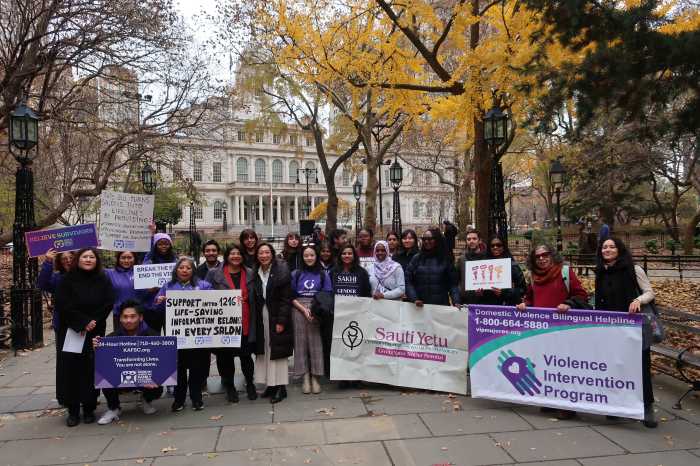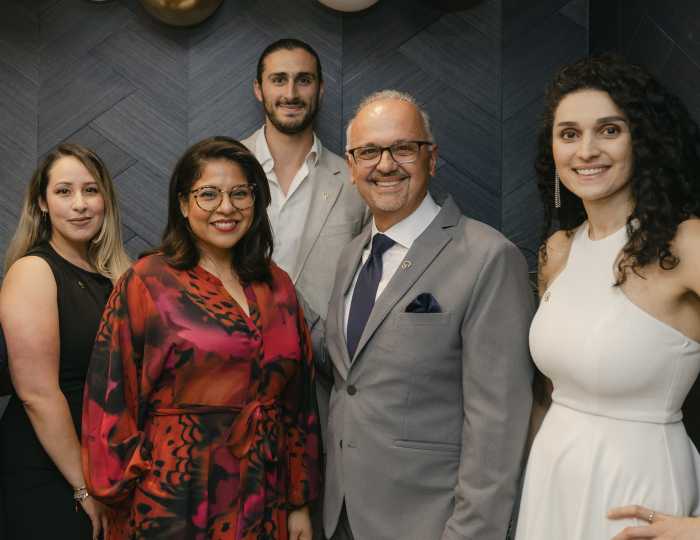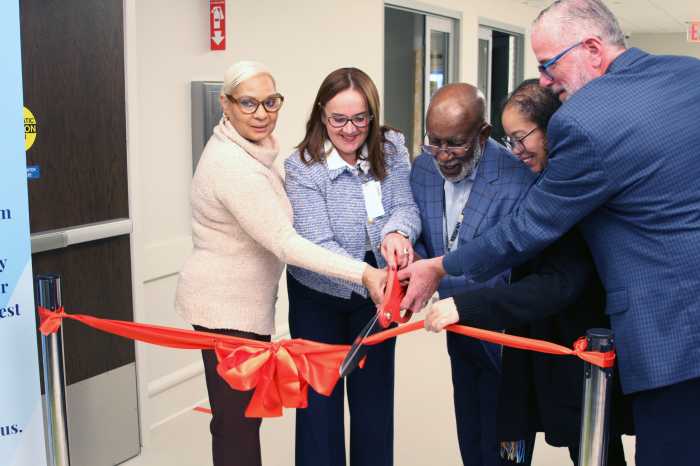Testing for a specific genetic mutation can help determine the risks of getting ovarian or breast cancer, giving those who test positive options that can reduce their risk levels.
Mutations in the BRCA1 and BRCA2 genes can indicate risk for getting these two forms of cancer. It is estimated that five to ten percent of the women who get breast or ovarian cancer have a hereditary form of it.
Dr. Jonathan Herman, an obstetrician and gynecologist at the LIJ Medical Center, said that this kind of genetic testing was discovered in 1994/1995. In the last three and a half years, he said he has done 350 such tests.
Some of the factors that might qualify a person for the test are if they have a personal history of breast or ovarian cancer, two or more family members have had it or if they are of Ashkenazi Jewish decent.
There were several factors behind Howard Beach resident Jennifer DiLandro, a labor and delivery nurse at LIJ, getting tested. First of all, when DiLandro was 18 years old, her mother passed away of cancer. She had been diagnosed with breast cancer in 1985 and went into a two-year remission. When the breast cancer returned in 1987, it spread to her lymph nodes and brain and eventually caused her passing.
Also, a year before DiLandro was tested, another nurse in her unit at LIJ was diagnosed with breast cancer.
While talking to Herman, DiLandro found out that he did BRCA gene testing and he gave her a seminar about it. When her results came back positive in the summer of 2006, DiLandro said the doctor was taken aback.
Herman said the only one out of twenty BRCA gene tests comes back positive.
DiLandro and her husband, Thomas, met with Herman after the results were in to talk about what it meant and what her options were. According to DiLandro’s results, she had a 90 percent chance of getting breast cancer and a 45 percent chance of getting ovarian cancer.
Although she had a difficult time deciding what steps to take, DiLandro eventually made the choice to have a complete hysterectomy, which was done on November 27, 2006 when she was 36 years old. One reason she finally decided to do so was because a close friend had been diagnosed with stage three ovarian cancer and had to have a hysterectomy and chemotherapy and is now in remission.
“That was what really kicked me into wanting to do the hysterectomy,” DiLandro said. “It really hit home when I saw that.”
DiLandro also said she doesn’t know if she would have gone through it if she didn’t have her three daughters, 16-year-old Gerilynn, 9-year-old Victoria and 3-year-old Ava. She said she didn’t want them to have to go through what she did when her own mother had cancer.
However, after the procedure, DiLandro said she became very depressed because of going through abrupt menopause and wants people to realize that this situation goes beyond just physical aspects. She also became agoraphobic and didn’t leave the house for three months. It took about a year for DiLandro to get out of her depression.
Looking back on everything almost two years after her surgery, DiLandro said that she is happy with her decision since she no longer has to wake up wondering if she will get ovarian cancer. The procedure also decreased her chances of getting breast cancer to 45 percent. She does monthly self breast examinations and has either an MRI or sonogram every six months. She also might have a mastectomy in the future.
“I want every women to know there is a test out there,” DiLandro said.
Herman said that deciding the course of action once a person tests positive is a very individual thing. Although he said they can’t get the risk down to zero, steps can be taken to decrease risk.
For more information on BRCA gene testing, contact Herman at 516-358-1200.




































